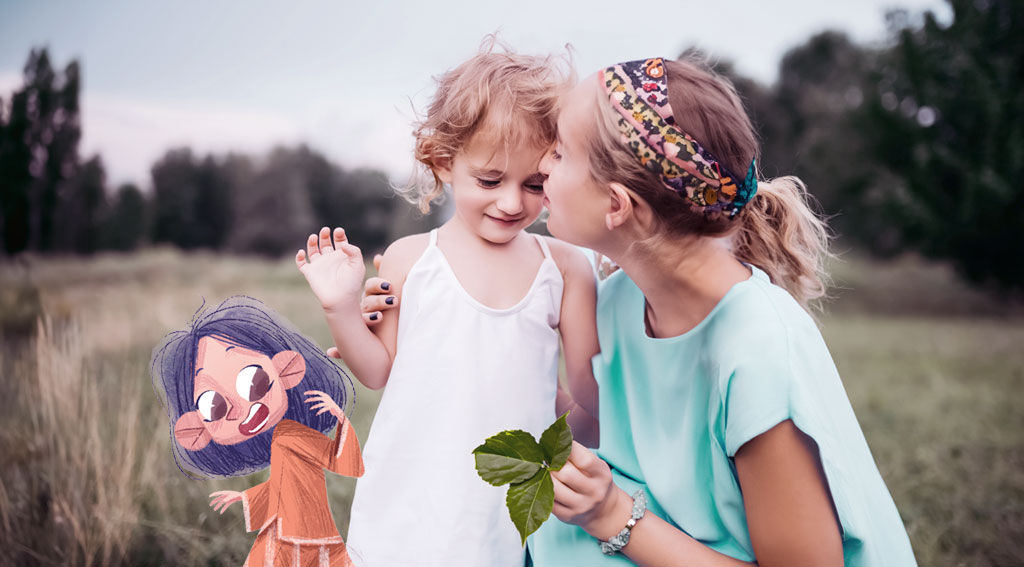As children transition from their current school routine to a home and vacation mode, every parent aims to support their child’s development by helping them spend more time in nature. But is it always necessary to go to a large park, a forest, or a seaside town miles away to do this?
Let’s take a look at how you can get closer to nature with your child during the summer vacation and have an unforgettable holiday together while supporting their cognitive and physical development.
Research shows that children who spend time in nature, playing with mud, climbing trees, and engaging in games with sticks and stones, not only make physical progress but also demonstrate much greater cognitive development when compared to their peers. In fact, recent studies indicate that playing with mud not only enhances a child’s creativity but also strengthens their immune system through the friendly microorganisms it contains.
At home, a toy car is usually just a car, but in nature, sticks and stones can take on multiple roles. The motor skills of a child who has walked unstructured terrain filled with rocks, mud, and grass are always much better than those of a child who only really walks in a shopping mall. In nature, anything can change at any moment, which is why a child experiences much more than is possible in the confined environment of an indoor space. In fact, a child begins to make sense of the world by experiencing life outdoors and in nature. If you want a child to understand that an animal species is endangered thousands of kilometers or even continents away from your home, you must first help them understand the ecosystems in their immediate surroundings.
For all these reasons, this summer vacation can be a wonderful opportunity for you and your child to reconnect with nature and develop in all aspects while having fun. For this, we suggest that you practice a habit that comes from ancient civilizations but is something we have started to forget. It’s very simple: Open your eyes to nature!
If you’re ready, here are some easy-to-implement suggestions to open your eyes to nature together, during the summer vacation.
Engage in Cloud Watching
First, find a space where you can observe clouds. If you have a balcony, a garden or terrace at home, you can start from there. You can compare the clouds you observe to everyday objects and thus spark your imagination. You can also use your tablets or phones to scientifically research the types and shapes of clouds.
Go on a Nature Color Hunt
For this, you can choose the garden of your apartment or house, a park in your neighborhood, or if possible, a wooded area. Before going on a color hunt, cut out various colors from unused magazines and newspapers at home with your child and stick them onto a cardboard. When you are done, you will have your own color palette. Try to find natural objects in the area you visit that match these colors. Leaves, branches, soil, and rocks can be included in this game. You won’t believe the variety of colors you’ll find in nature.
Meet a Tree
You can do this activity in a park with trees. Blindfold your child and guide them by their shoulders towards a tree. Encourage them to touch the tree and even give it a hug if they want to. Ask them to describe the texture of the tree by touching its trunk. If there are any distinct features, like gnarled areas, guide their hands towards them. Then, ask them to make guesses about the age and type of the tree. They might even want to share a story about the tree with you.
Prepare a Leaf Journal
Collect different types of leaves from the places you visit and the wooded areas you explore during your vacation. Use a glue stick to sitck them into a journal and write down their species and the location where you found them, creating an archive. This way, you will not only witness the diversity of leaf species but also create a wonderful souvenir from the summer vacation.
Count the Sounds of Nature
Go with your child to a natural area, as close to nature as possible, and close your eyes. Listen carefully to sounds like birds, insects, rustling leaves, and more. Silence should be the main rule during this activity. Use your fingers to count the natural sounds you hear. When you open your eyes, calculate how many different natural sounds you heard. This way, you will also engage your math skills. Doing this activity every day will not only increase your attention span but also be a fun way to learn about biodiversity.
Take Reading to Nature
It would be wonderful if you could take a favorite children’s book to nature and read it there. Take advantage of the wonderful creativity in children’s literature and perhaps experiment with Land Art; recreating the book characters using natural materials such as stones, sticks, branches, and even mud. Bringing the text you read to nature will not only make it more memorable for your child but also strengthen the connection between nature and the story. We can recommend the books “The Land of Magical Words” and “Stones, Sticks, Soil” from the Kidly collection for this activity.
By using all these simple activities in your garden, balcony, or the forest, you can have a delightful time together during the summer vacation and establish a bond through nature-based play. Nature awaits you to explore its colors, sounds, hidden words, and patterned clouds.

Özge Gökbulut Bayer
Author of Children’s Literature and Educator
Özge Gökbulut Bayer, a Forest School and Nature Pedagogy teacher is also a Social Sciences teacher and has been working as a passionate educator for many years. Every day, she takes her students to the forest and accompanies them in nature-based games. She has a great love for writing. Some of her much loved books, published on Kidly, include “Komorebi,” “Lolly’s Sleepy Soup,” and “The Land of Magical Words.”

